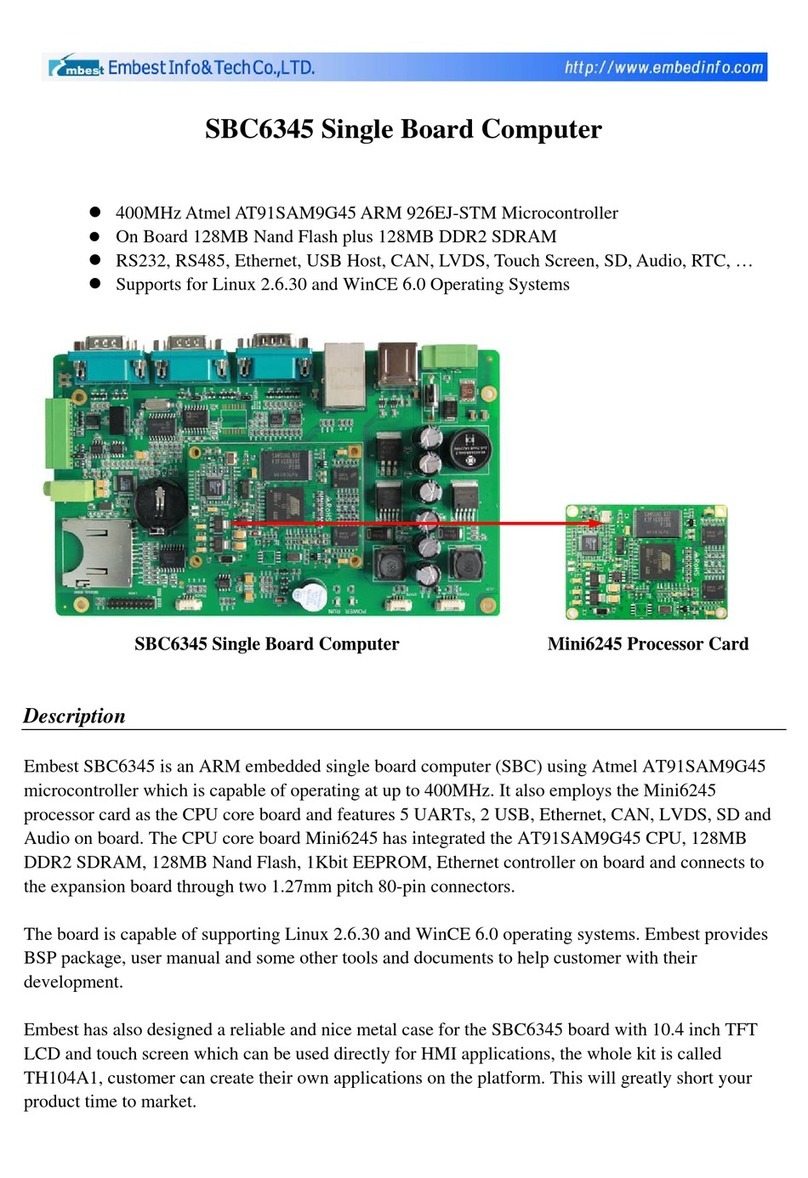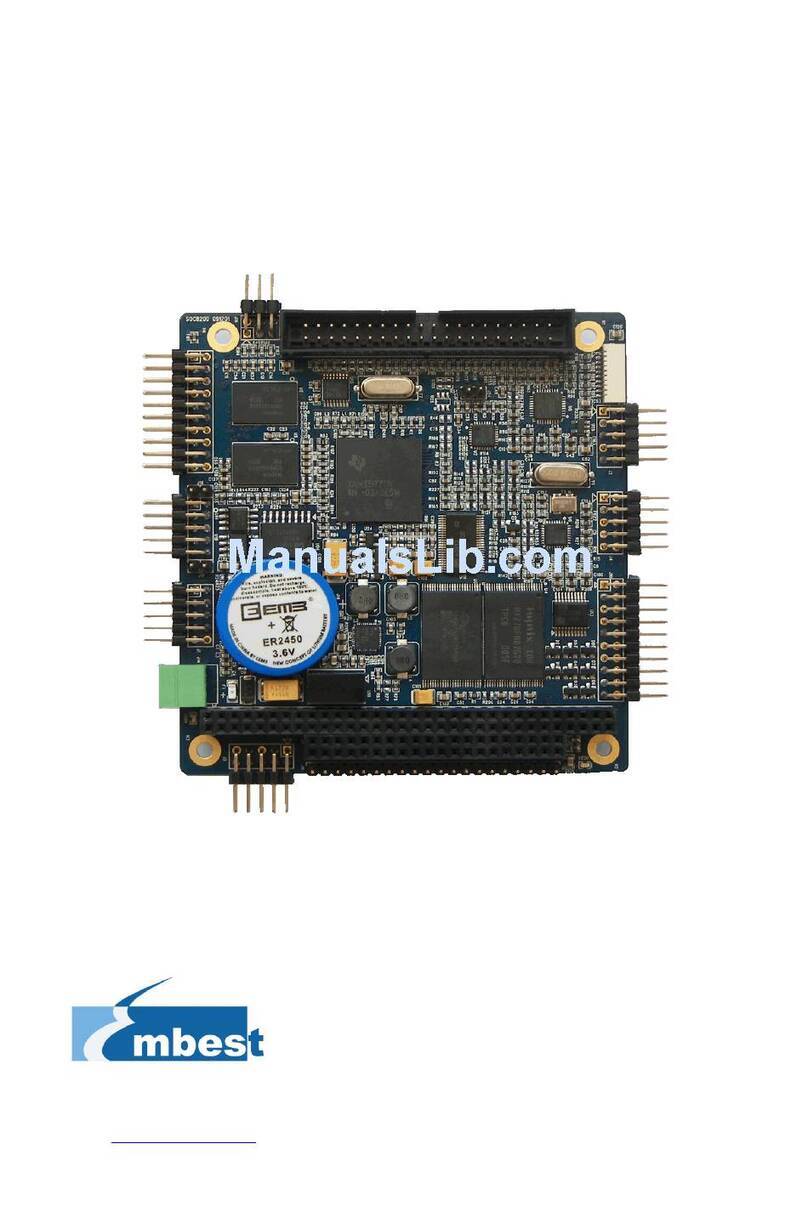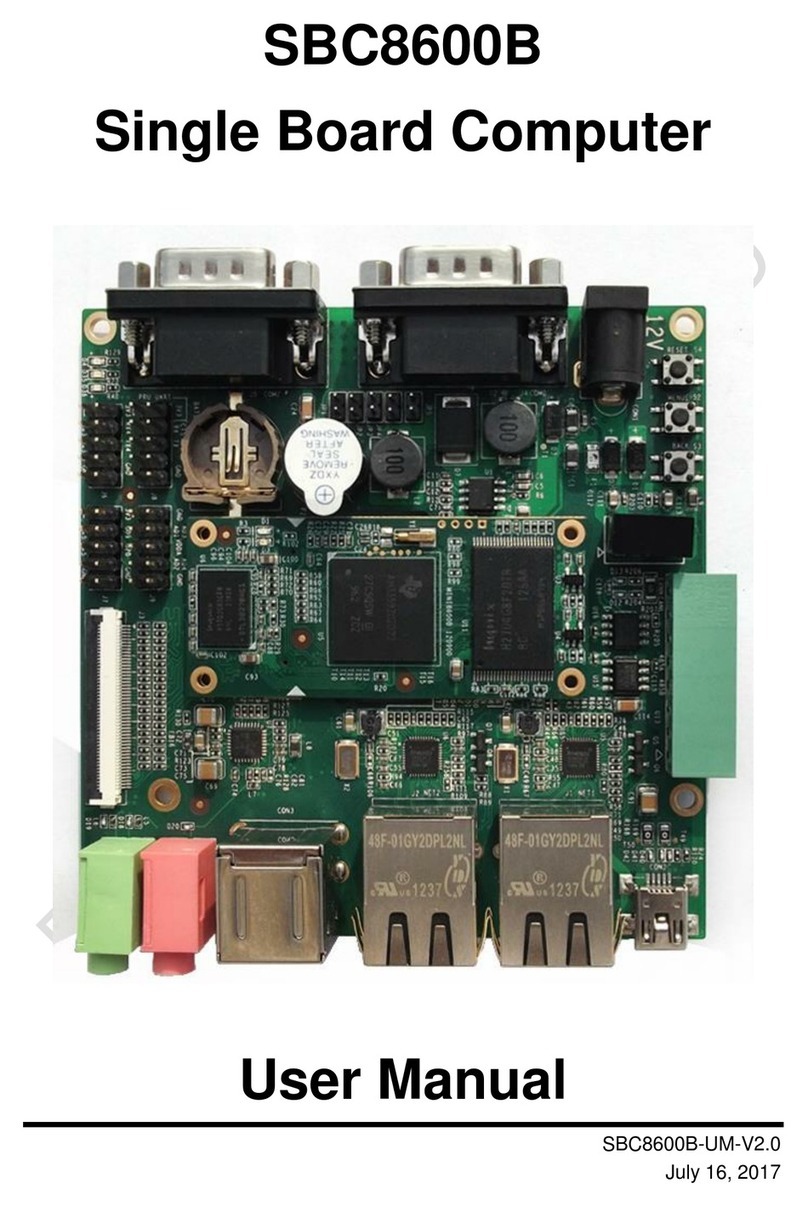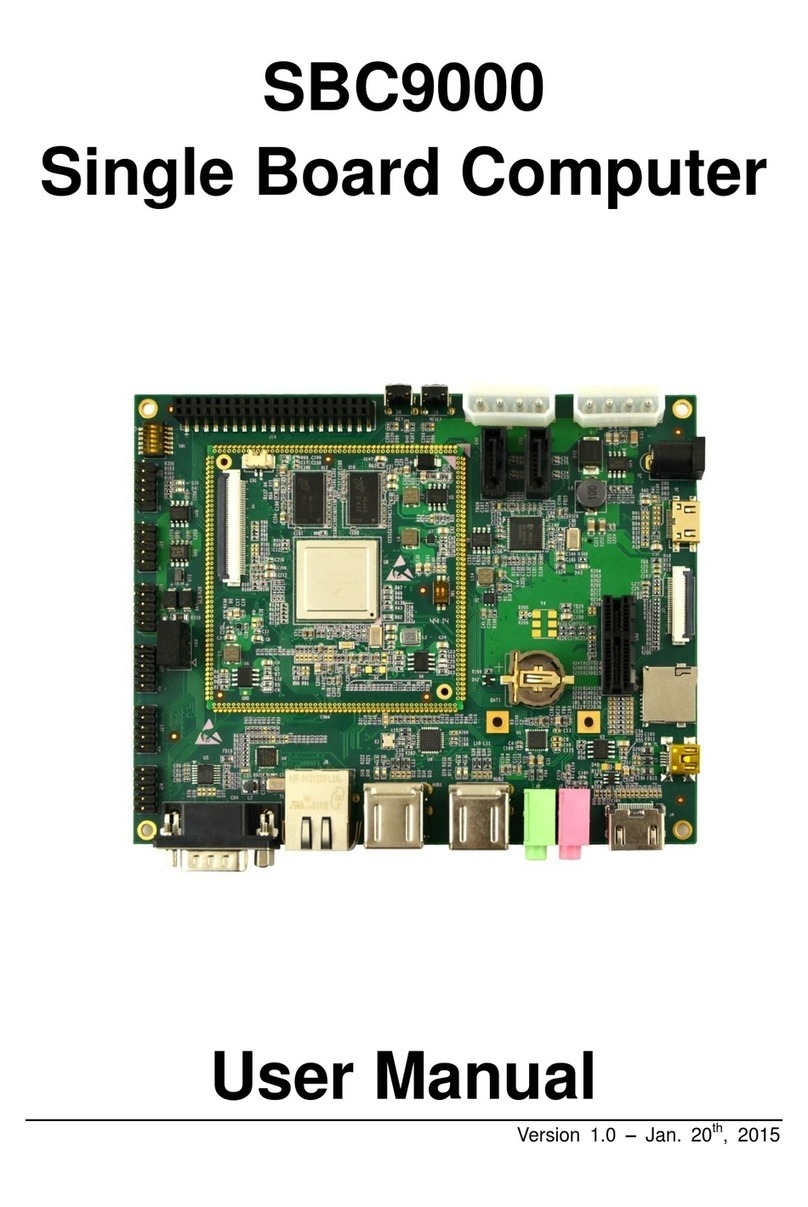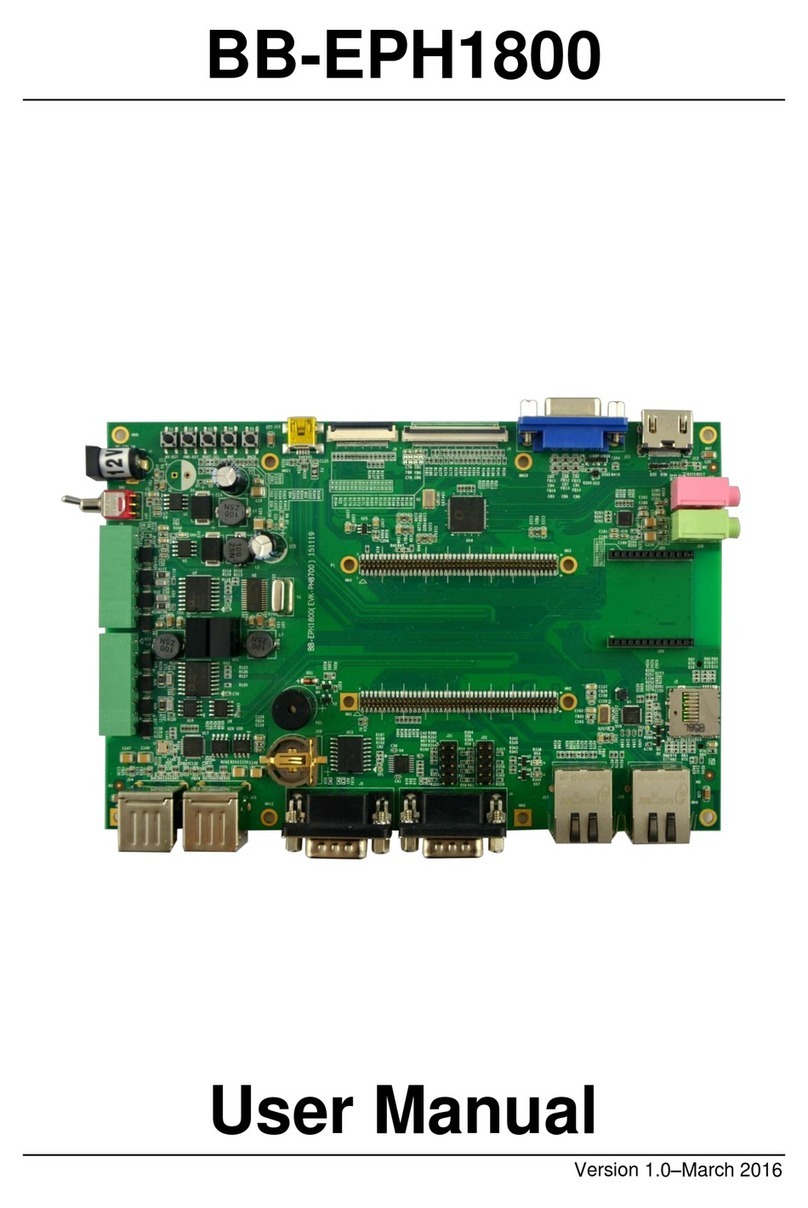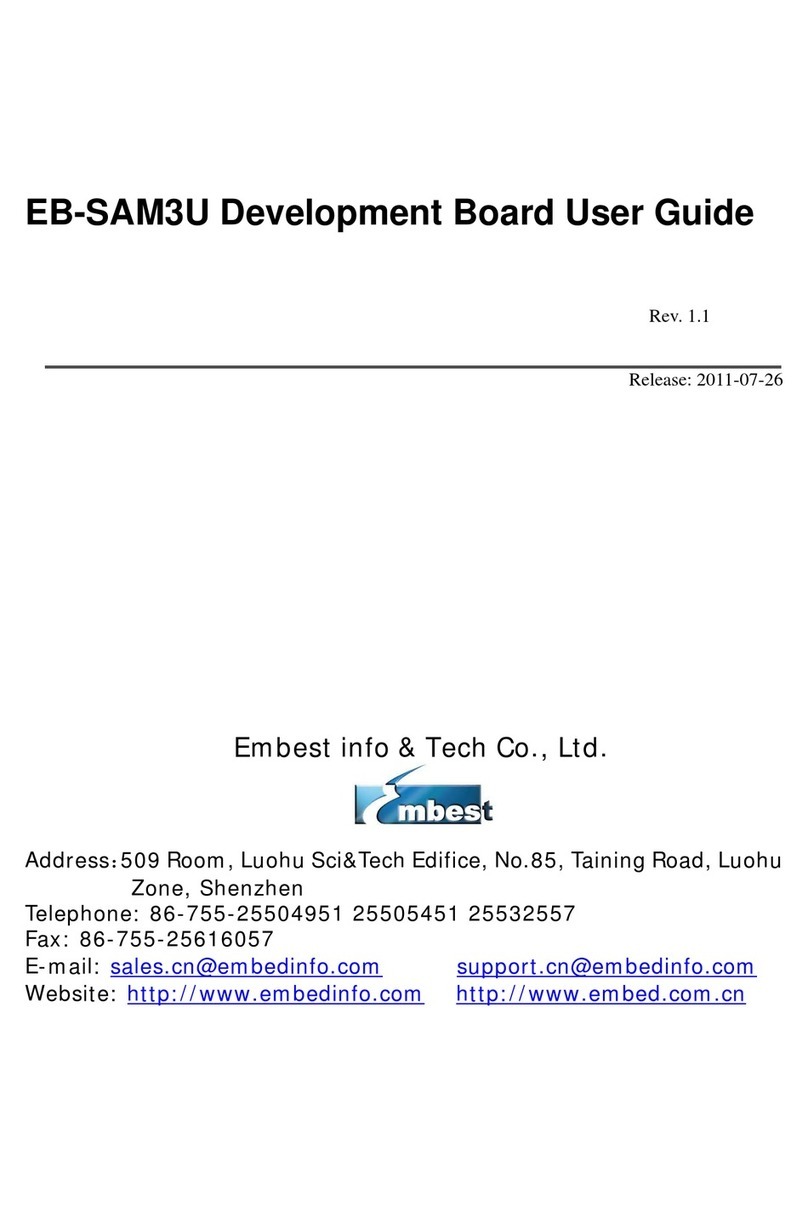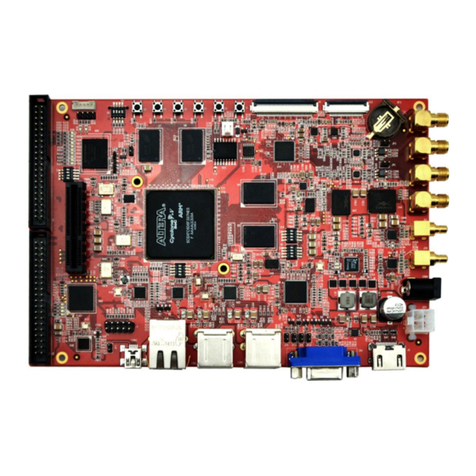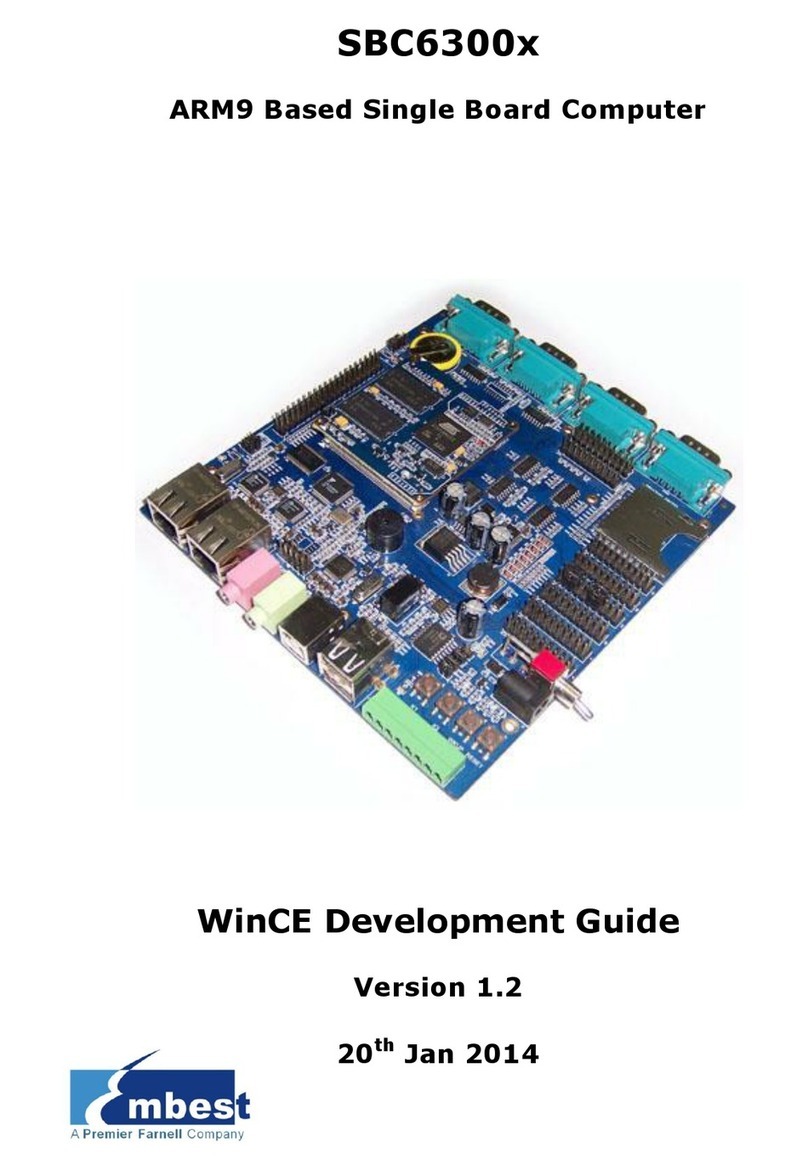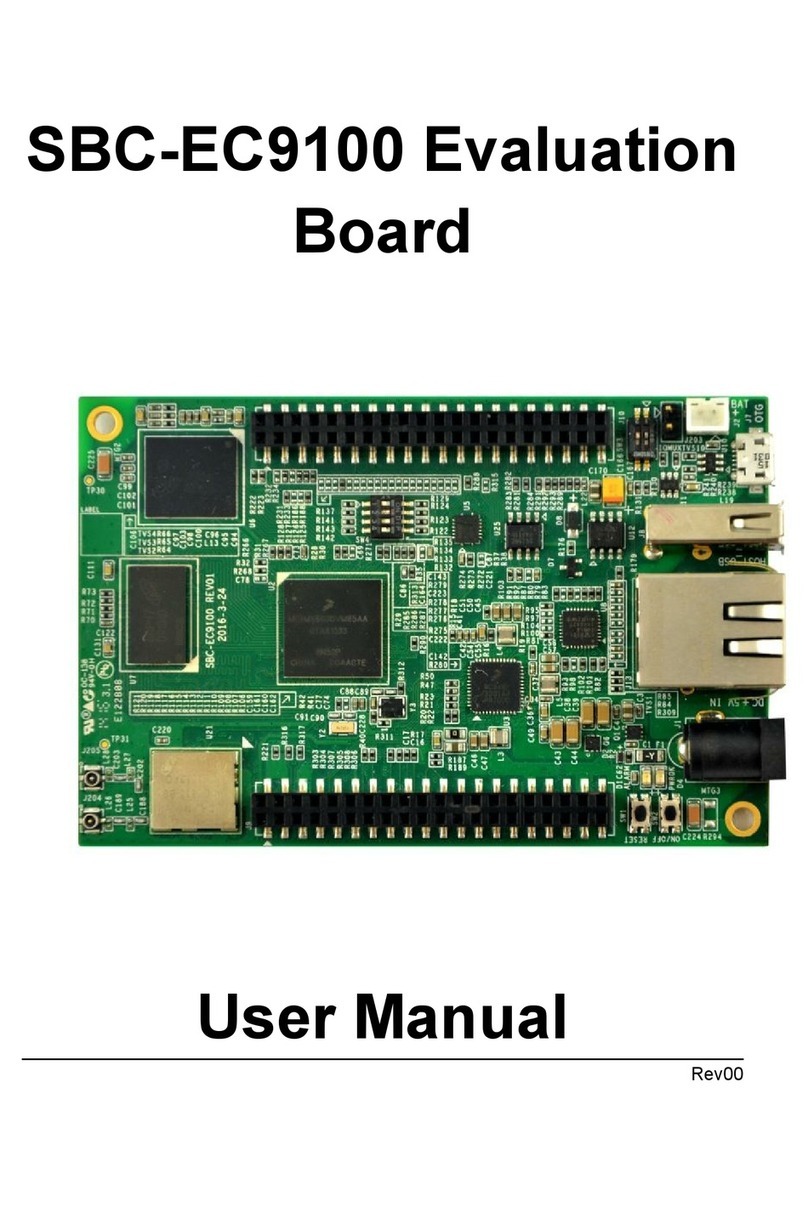Table of Contents
1 Overview ........................................................................... 1
1.1 Product Information .........................................................1
1.2 Kit contents ....................................................................1
1.3 Board Interfaces..............................................................2
1.4 System Block Diagram .....................................................3
1.5 Physical Dimensions.........................................................4
2 Hardware Features ............................................................ 5
2.1 Processor .......................................................................5
2.2 On-Board Memory ...........................................................5
2.3 Core Board Functions .......................................................6
2.4 Main Board Functions .......................................................6
3 Hardware Details............................................................... 8
3.1 Interfaces .......................................................................8
3.1.1 Power(J26,J1)...................................................................... 8
3.1.2 NET0(J3)............................................................................... 8
3.1.3 NET1(J12)............................................................................. 9
3.1.4 UART(8 channels)................................................................. 10
3.1.5 DEBUG(DEBUG).................................................................... 10
3.1.6 COM0, 1 (COM0, COM1) ........................................................... 10
3.1.7 COM2(COM2)....................................................................... 11
3.1.8 EXT_COM(J23)..................................................................... 12
3.1.9 Matrix keyboard(J16)............................................................ 13
3.1.10 USB device(J9)................................................................... 14
3.1.11 USB HOST(J5).................................................................... 15
3.1.12 SD card(J15)...................................................................... 15
3.1.13 Audio (J17,J18) ..................................................................... 15
3.1.14 JTAG (J8).............................................................................. 16
